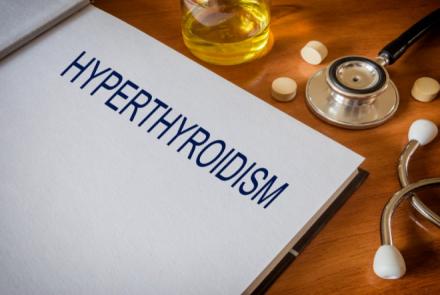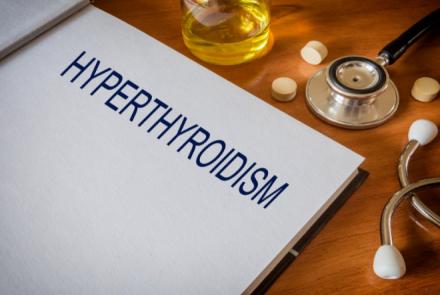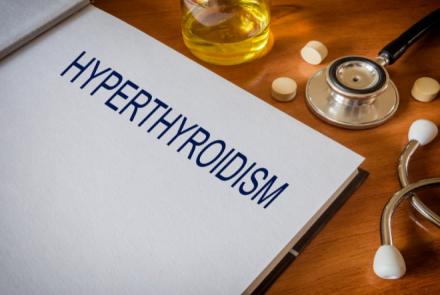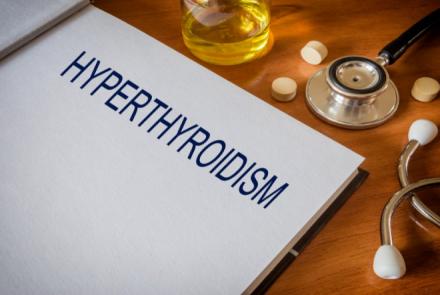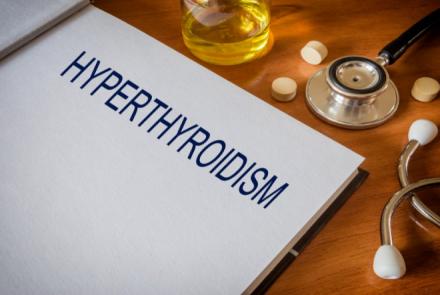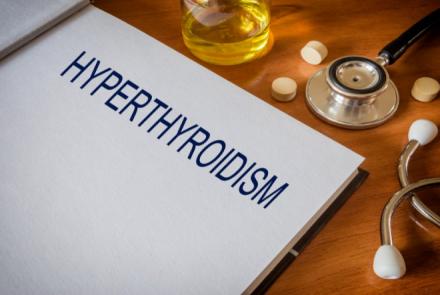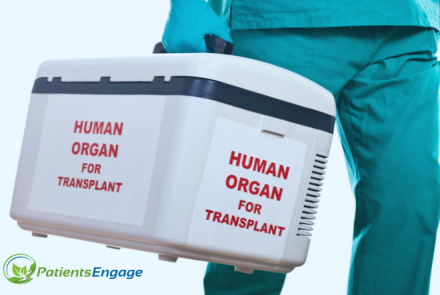Treatment of Hyperthyroidism
Hyperthyroidism is usually treated with:
Medicines commonly include Beta-blockers or Antithyroid pills.
Radioiodine Therapy is an effective method that uses radioactive iodine -131 to destroy the cells in the gland. Can be taken in the form of capsules or liquid.
Thyroid surgery to remove part of the thyroid gland is less commonly done. Is done only when medications are ineffective or not optional such as people with large goiters or pregnant women.
Note:…
Latest Stories
- Steps to Managing Hyperthyroidism Take your daily medication on time. It will reduce your symptoms and keep the thyroid hormones in balance. There is no specific diet but reduce intake of iodine. Iodine is present in certain foods, supplements and medications like cough syrups. Keep a check on your blood pressure and blood glucose levels. Hypertension and Diabetes are commonly associated with Thyroid dysfunction. Download our e-books on hypertension and diabetes management.
- There is no clear way to prevent hyperthyroidism but you can reduce your risk by doing the following: Get your hormone levels checked all through pregnancy and 6 months after giving birth. Control your diabetes. Check your Vitamin B12 levels. People with pernicious anemia are at a higher risk. Check your thyroid levels regularly if you have a family history or if you have had a thyroid problem or surgery in the past. References: NIH: National institute of Diabetes and Digestive Kidney…
- Diagnosis of Hyperthyroidism is based on a full clinical history, physical examination and blood tests. Blood test of serum TSH, T3, T4 and Thyroid antibody levels is done initially. Further testing includes thyroid scan, ultrasound and radioactive iodine uptake test.
- Hyperthyroidism is classified into two types: Primary Hyperthyroidism is essentially Graves' disease which accounts for 60-80% of all cases of hyperthyroidism. It is an autoimmune disorder. Secondary Hyperthyroidism can be due to a nodule, goitre or any rare cause. Read more about Graves' Disease here
- The table below lists the symptoms of Hyperthyroidism or Thyrotoxicosis:
- There are many possible causes of Hyperthyroidism such as: Graves' disease accounts for 60-80% of all cases. It is an autoimmune disorder, whereby the body’s immune system attacks the gland causing it to make more thyroid hormones. Thyroiditis or inflammation of the thyroid gland causes thyroid hormones to leak into the bloodstream. Thyroiditis can be painless or silent, subacute or postpartum (post- delivery) and can show symptoms of hypothyroidism as well. Thyroid nodules or lumps are common…
- What is Hyperthyroidism The thyroid is an endocrine gland situated at the base of the neck. It is a vital gland that produces three major hormones : T3 (Triiodothyronine), T4 (Thyroxine) and Calcitonin. These hormones play a major role in the growth, metabolism and development of the human body. When there is an oversecretion of the T3 and T4 hormones, it leads to a condition termed Hyperthyroidism or Overactive Thyroid or Thyrotoxicosis. The term thyrotoxicosis is used to refer to the…
- Organ, tissue and cell transplants are sometimes the solution for certain conditions. This explains the basics of transplantation, types of transplants, lifespan of common transplanted organs and basic steps to preventing organ rejection. What is Transplantation? Transplantation is the procedure whereby an organ, tissue or cells is removed from one area of the body and implanted to another part of the body of the same or another person’s body. The tissue or organ is sometimes called “graft” or…

